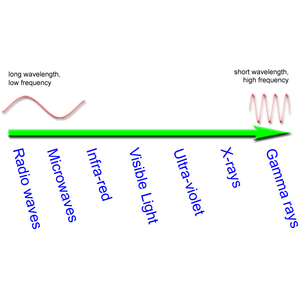Do LED Lights Damage Our Eyes?
A recent study from the Complutense University of Madrid claims that 99% of cells which protect the retina can actually be damaged by LEDs. The Spanish researchers say LEDs produce high levels of ‘Blue band’ radiation of the light spectrum, which over long periods of time can cause damage. With their use being used more and more, Dr Celia Sanchez Ramos says, “This problem is only going to get worse and worse.”
In order to understand you need to have basic knowledge of the electromagnetic spectrum. This ranges from low frequency waves such as radio waves found in TV signals right up to the more dangerous high frequency end to gamma radiation which is used to kill cancer cells. Henry Lau from the Institute of Physics says, “LEDs produce light at the same frequency range as sunlight; it’s called visible light on the electromagnetic spectrum. Unlike sunlight, however, the light from LEDs is not intense enough to damage someone’s eyes. Only ultraviolet and higher frequencies on the electromagnetic spectrum can cause damage to cells.”
The Madrid study tested someone looking at the equivalent of a 100watt light bulb, at a distance of 12 inches for 12 hours a day. However London Eye Hospital Consultant Ophthalmologist, Bobby Qureshi, says although all light is radiation, only certain frequencies can cause harm. It is only when you get closer to the UV end of the spectrum and beyond, that there is potential to cause damage in the retina.”
Even with the average person now spending 9 hours every day glued to a screen whether it be a computer, TV or a mobile devices, Qureshi says it would take a huge increase in use to cause any permanent retinal damage. “Your eyes also have a physical barrier to the spectrum of light. When light comes in, it passes through the cornea and the lens, which allow for much of the light to be absorbed. As we age, people develop cataracts on their lens which is another one of nature’s ways to help prevent the blue end of the spectrum of light from coming into the eye.”

